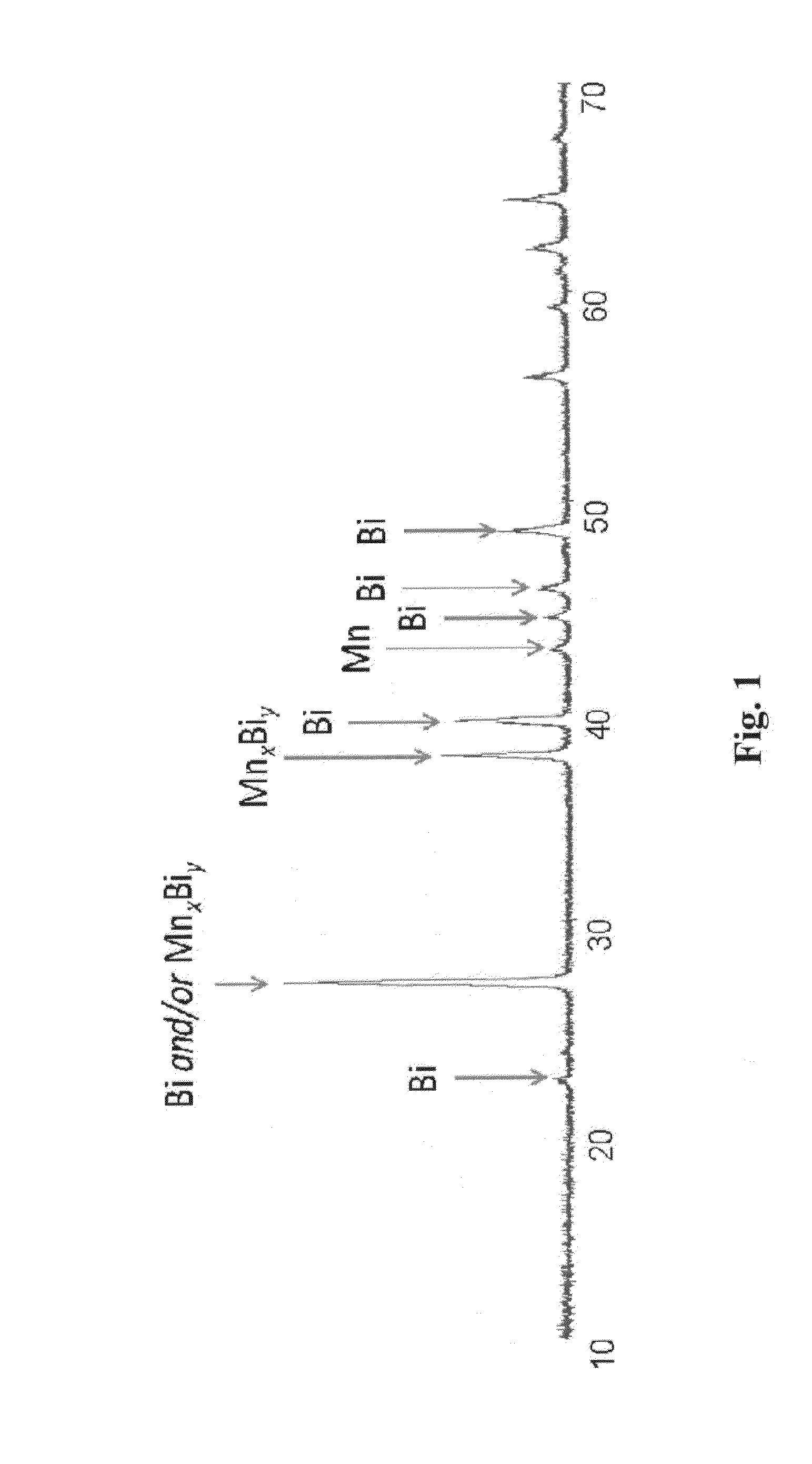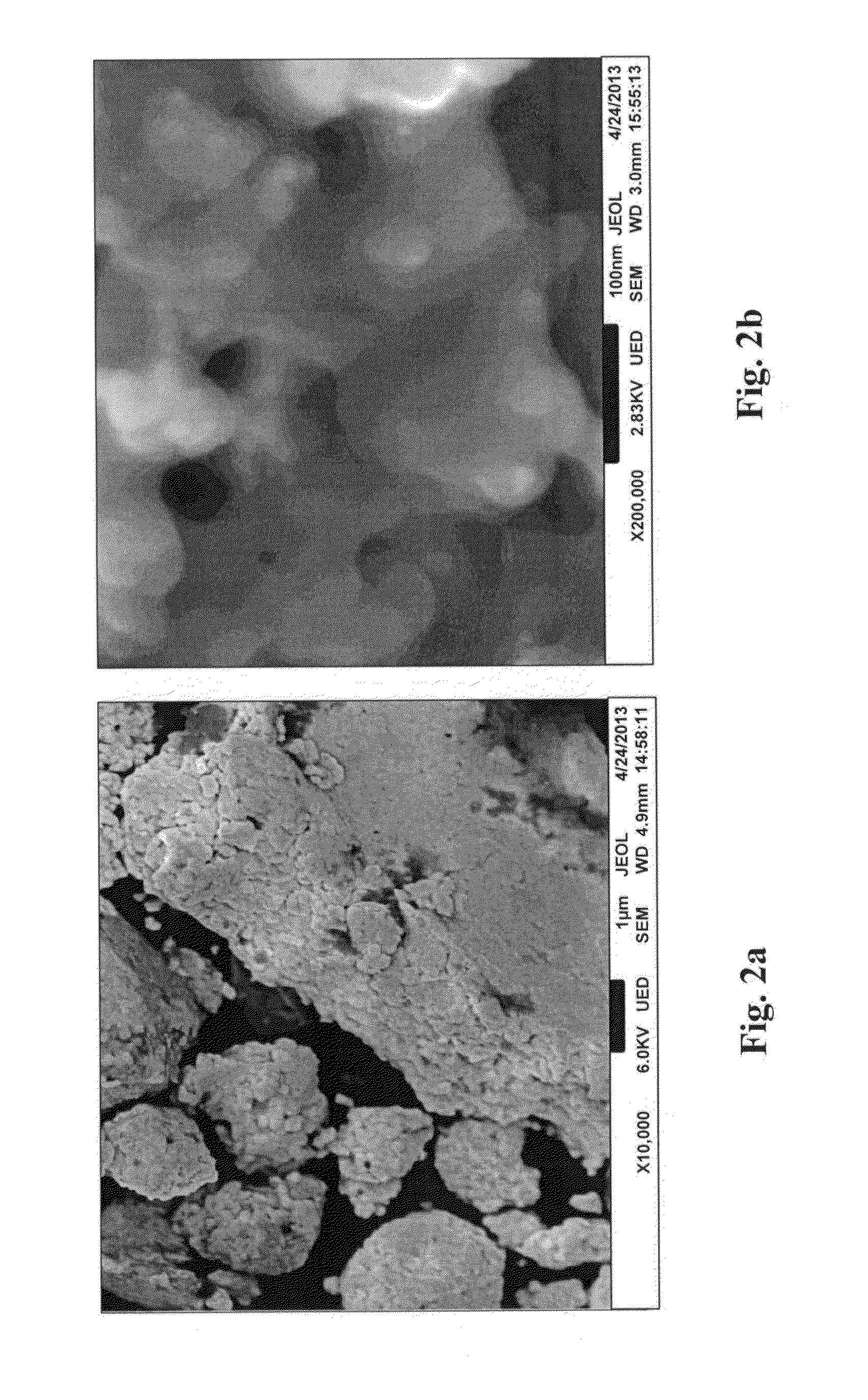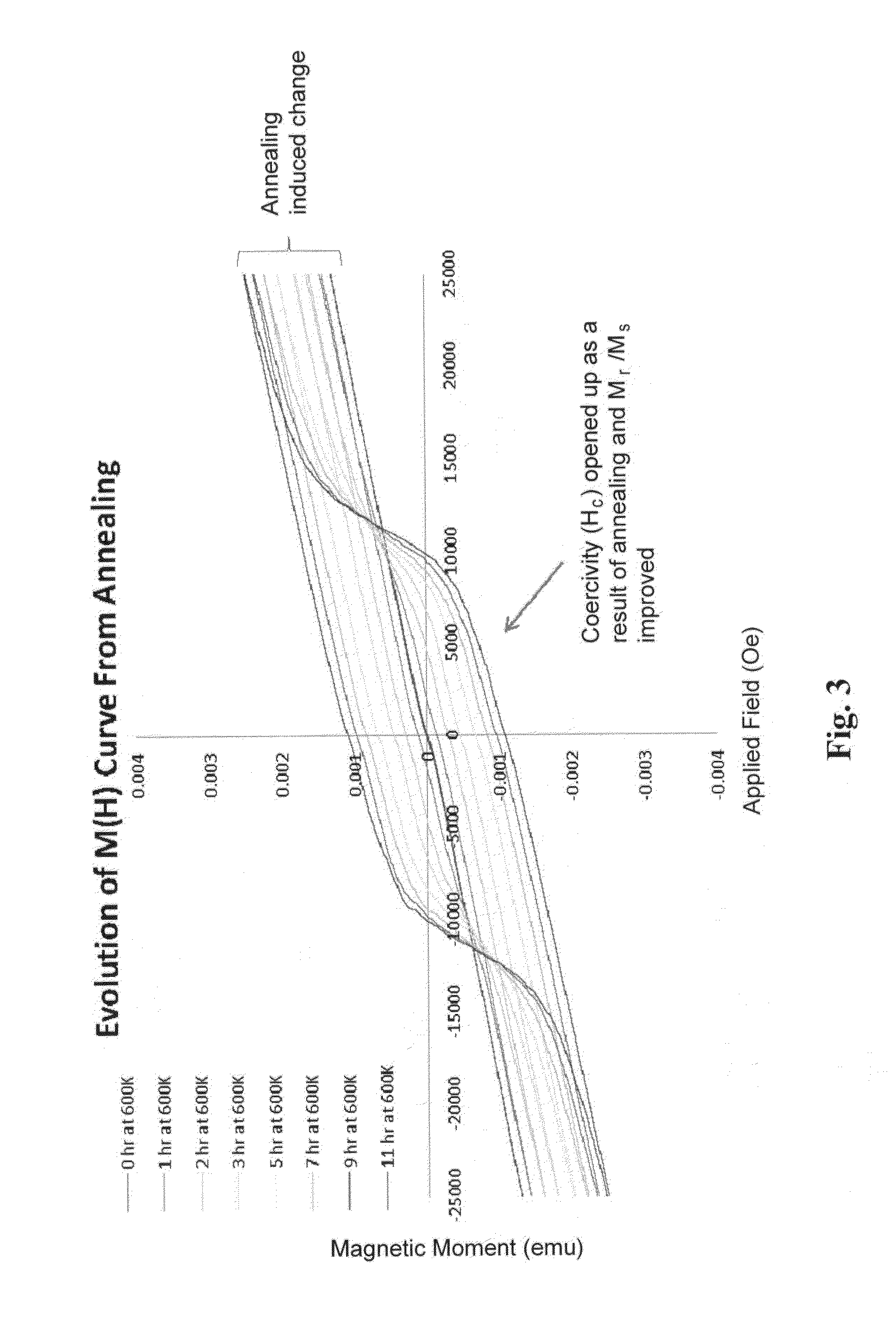Synthesis and annealing of manganese bismuth nanoparticles
a technology of manganese bismuth and nanoparticles, which is applied in the direction of magnetic materials, magnetic bodies, transportation and packaging, etc., can solve the problem of unstable supply of manganese bismuth nanoparticles
- Summary
- Abstract
- Description
- Claims
- Application Information
AI Technical Summary
Benefits of technology
Problems solved by technology
Method used
Image
Examples
example 1
MnBi Nanoparticle Synthesis
[0049]200 mL of THF, 0.371 g Mn powder and 11.5 mL of 2 M LiBH4 / THF solution are combined. The reaction was first stirred at 23° C. for 24 hrs and then at 60° C. for an additional 24 hrs. To the resulting mixture was added a solution of 4.413 g bismuth neodecanoate dissolved in 200 mL THF. The bismuth neodecanoate solution was added slowly over 20 mins to the stirring Mn / LiBH4 solution. After the bismuth neodecanoate addition was complete, 0.513 g octylamine were added to the product solution. The nanoparticles aggregated over the following 5 mins and were washed with water to remove reaction side products.
Characterization of the MnBi Nanoparticles
XRD Analysis
[0050]The XRD spectrum of the MnBi nanoparticles indicated the presence of three different crystalline materials present in the sample: MnBi alloy, Mn metal, and Bi metal (see FIG. 1). The MnBi nanoparticles were calculated to be approximately 30 nm in diameter based on peak width in this XRD spectrum...
example 2
Annealing Effects on MnBi Nanoparticles
[0052]The as-synthesized MnBi nanoparticles were demonstrated on a very weak coercivity (s) and coercivity (Hc). Additionally, Mr / Ms improved with this annealing protocol. Hc values up to 1 T were measured, with an Mr / Ms ratio of 45% (FIG. 3).
[0053]Investigation at lower annealing temperature (550 K) showed that a similar 1 T Hc could be reached, but that it required over 40 hrs of annealing, as opposed to ˜11 hrs at 600 K (FIG. 4). Annealing the same batch of MnBi nanoparticles at 650 K gave very poor results, with a maximum Hc of only approximately 500 Oe.
[0054]Ferromagnetic MnBi only exists in what is referred to as the ‘low temperature phase’ region of the MnBi phase diagram (FIG. 5a). Above it exists what is referred to as the ‘high temperature phase’. The high temperature phase is known to exhibit antiferromagnetic behavior. A sample of MnBi nanoparticles was heated to 800 K to induce this change from the ferromagnetic low temperature pha...
PUM
| Property | Measurement | Unit |
|---|---|---|
| particle size | aaaaa | aaaaa |
| grain size | aaaaa | aaaaa |
| particle diameter | aaaaa | aaaaa |
Abstract
Description
Claims
Application Information
 Login to View More
Login to View More - R&D
- Intellectual Property
- Life Sciences
- Materials
- Tech Scout
- Unparalleled Data Quality
- Higher Quality Content
- 60% Fewer Hallucinations
Browse by: Latest US Patents, China's latest patents, Technical Efficacy Thesaurus, Application Domain, Technology Topic, Popular Technical Reports.
© 2025 PatSnap. All rights reserved.Legal|Privacy policy|Modern Slavery Act Transparency Statement|Sitemap|About US| Contact US: help@patsnap.com



